Shoulder Anatomy
The shoulder is a highly movable body joint that allows various movements of the arm. It is a ball and socket joint, where the head of the humerus (upper arm bone) articulates with the socket of the scapula (shoulder blade) called the glenoid. The two articulating surfaces of the bones are covered with cartilage, which prevents friction between the moving bones. The cartilage is lubricated by synovial fluid. Tendons and ligaments around the shoulder joint provide strength and stability to the joint.
What is Osteoarthritis?
When the cartilage is damaged, the two bones rub against each other resulting in pain, swelling and stiffness of the joint (osteoarthritis).
What is Shoulder Joint Replacement?
Total shoulder replacement surgery is performed to relieve these symptoms. In this surgery, the damaged articulating parts of the shoulder joint are removed and replaced with artificial prostheses. Replacement of both the humeral head and the socket is called a total shoulder replacement.
What are the Indications for Shoulder Joint Replacement?
Total shoulder joint replacement surgery is indicated for conditions such as osteoarthritis or rheumatoid arthritis when medication, injections, physical therapy, and activity changes do not help relieve pain. Your doctor recommends surgery when you have the following symptoms:
- Severe shoulder pain that restricts daily activities
- Moderate to severe pain during rest
- Weakness and/or loss of motion
Preparation for Shoulder Joint Replacement
To decide whether total shoulder replacement is a good option for you, your surgeon will evaluate your condition thoroughly.
Your surgeon reviews your medical history and performs a physical examination of your shoulder to assess the extent of mobility and pain. Imaging tests such as X-ray or MRI (magnetic resonance imaging) are ordered.
Shoulder Joint Replacement Procedure
The surgery is done under regional or general anesthesia. An incision is made over the affected shoulder and the underlying muscles are separated to expose the shoulder joint. The surgery may be performed as open surgery, where a large incision is made, or minimally invasive, where small incisions are made to insert an arthroscope (a thin tube with a camera and light source) and surgical tools.
The upper arm bone (humerus) is separated from the glenoid socket of the shoulder bone. The arthritic or damaged humeral head is cut and the humerus bone is hollowed out and filled with cement. A metal ball with a stem is gently press- fit into the humerus.
Next, the arthritic part of the socket is prepared. The plastic glenoid component is fixed in the shoulder bone.
After the artificial components are implanted, the joint capsule is stitched and the wound is closed.
Postoperative Care for Shoulder Joint Replacement
After the surgery, pain medications and antibiotics are prescribed to control pain and prevent infection. Your arm may be secured in a sling or cast. The rehabilitation program includes physical therapy, which is started soon after the surgery and is very important to strengthen and provide mobility to the shoulder. You may be able to perform gentle daily activities two to six weeks after surgery.
Risks and Complications of Shoulder Joint Replacement
As with any major surgery, there may be potential risks involved:
- Anesthetic complications such as nausea, dizziness and vomiting
- Infection of the wound
- Dislocation, requiring repeat surgery
- Damage to blood vessels, nerves or muscles
- Failure to relieve pain
- Pulmonary embolism
- Wear and tear of prosthesis
Shoulder Replacement Frequently Asked Questions
How long will my shoulder replacement last?
Contemporary Shoulder replacements will very likely last more than a 20 years according to our current data.
How long does it take to recover from surgery for a shoulder replacement?
The majority of patients report that their shoulder feels better than it did before surgery within 1-2 weeks and they are performing all activities of daily living with ease. Very strenuous activities are resumed 3 months after surgery.
Is shoulder replacement safe?
It is extremely safe, especially when performed in the hands of a high volume surgeon. All procedures come with the risk of infection, nerve or blood vessel injury. With shoulder replacement the number one complication is infection. High volume surgeons have this under 1%.
How do I get ready for shoulder replacement surgery?
Preparation includes making sure you have medical clearance for surgery. Make sure you review any instructional material your Doctor has given you. Set up your first physical therapy appointment before surgery.
When can I get back to my normal routine after surgery for shoulder replacement?
You can usually resume all activities of daily living within 1-2 weeks post-surgery. Typically you will be cleared for strenuous activity at 3 months post surgery.
When is a shoulder replacement recommended?
It’s recommended for severe shoulder pain or stiffness that doesn’t improve with conservative treatments, often due to arthritis, severe fractures, or rotator cuff injuries. If you were to rate your shoulder at less than 80 percent of normal overall then you would benefit significantly from shoulder replacement surgery.
What part of the shoulder is replaced?
In a total shoulder replacement, both the ball (humeral head) and the socket (glenoid) of the shoulder joint are replaced with artificial components.
How long does total shoulder replacement surgery take?
The average time is 2 hours, extremely high volume surgeons perform the procedure in less than 30 minutes.
What is the recovery like after total shoulder replacement surgery?
Recovery involves initial rest, followed by physical therapy to regain strength and mobility. Pain is managed with medications, and gradual return to activities is encouraged. The majority of patients report that their shoulder is better than it was before surgery within 1-2 weeks.
What happens when I go home after having total shoulder replacement surgery?
Once home, follow your surgeon’s instructions regarding wound care, activity restrictions, and physical therapy. Regular follow-up appointments can be conducted in person or via telemedicine.
See also: Reverse Shoulder Replacement • Partial Shoulder Replacement
